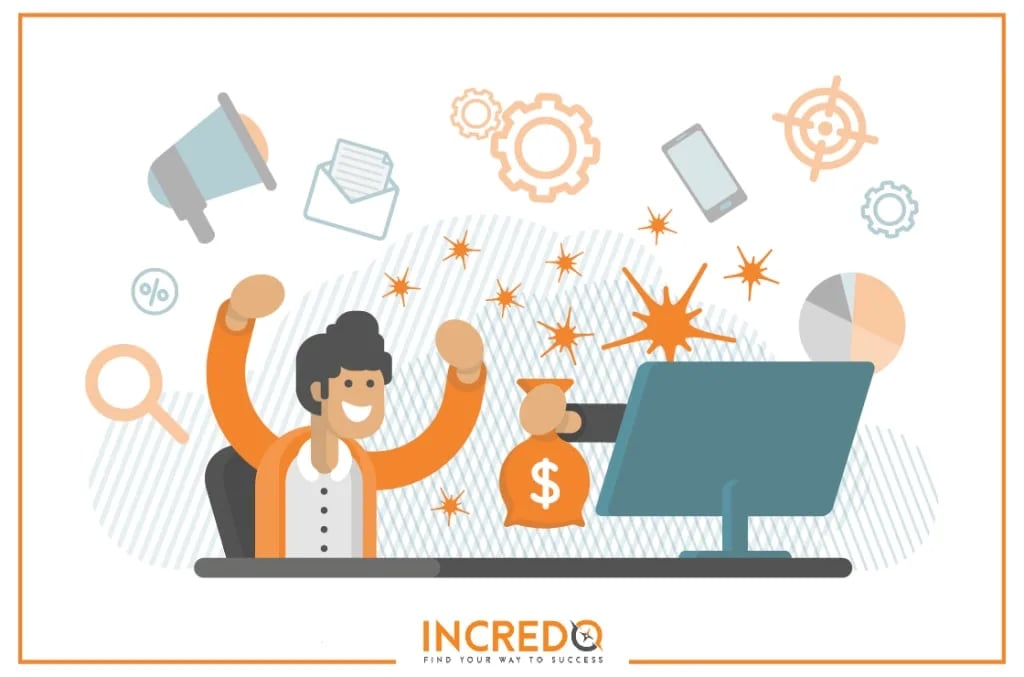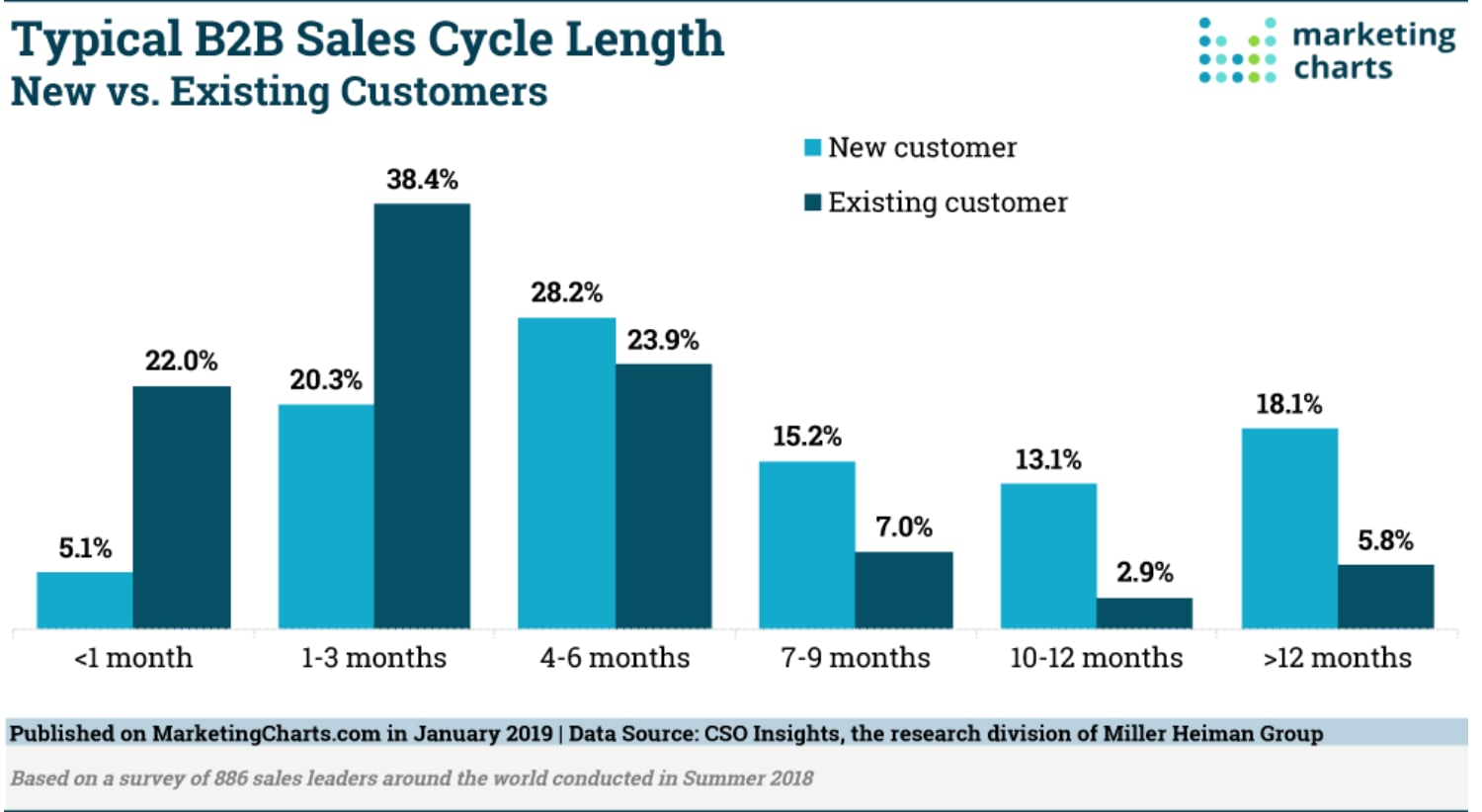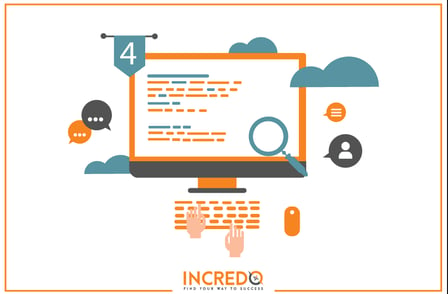How to Capitalize on The Short Sales Cycle of SaaS

How to Capitalize on The Short Sales Cycle of SaaS

The rapidly growing software-as-a-service (SaaS) boom presents serious opportunities for businesses that are willing to take advantage of the demand for web-based software over more traditional, on-premises solutions. Compared to traditional solutions, SaaS products often have short sales cycles — and the lower the annual contract value of a product, the faster the cycle. This speed can both be a challenge and offer serious advantages to businesses that know how to leverage shorter sales cycles. These nine techniques and considerations show how any business can utilize the resources they have to reorganize their sales strategy around a short sales cycle.
1. Optimize the Sales Funnel
A business’s sales funnel is key to its sales operations. Without an effective funnel, even the best sales team will have a hard time moving new leads from casual interest to a conversion. A good sales funnel will also help you know exactly what your customer base needs, both in terms of product features and ongoing support. Source: https://martech.zone/sales-funnel-stages-and-digital-marketing/ Typically, optimizing the sales funnel begins with building out an ideal customer profile — or profiles, if you’ve already identified distinct audience segments you want to target. A customer profile is a description of the theoretical perfect customer — the ideal person who you are selling to and what they need. This profile will help the business develop its sales funnel and help individual sales reps better understand what individual leads may be enticed by in a product. This profile and market research will also help your business identify where your customers are on the web and which marketing channels will be most effective when trying to reach them. When developing a sales funnel, you’ll also need to know how to qualify leads based on their probable quality and likelihood of conversion. The profile will help here, too — the closer a lead is to the ideal, the more likely they are to convert or move through the sales funnel. Information from sales cycles will be necessary to optimize a sales funnel over time. With short sales cycles, you’ll have data sooner, meaning fast analysis of new information and optimization of processes will be important.
Source: https://martech.zone/sales-funnel-stages-and-digital-marketing/ Typically, optimizing the sales funnel begins with building out an ideal customer profile — or profiles, if you’ve already identified distinct audience segments you want to target. A customer profile is a description of the theoretical perfect customer — the ideal person who you are selling to and what they need. This profile will help the business develop its sales funnel and help individual sales reps better understand what individual leads may be enticed by in a product. This profile and market research will also help your business identify where your customers are on the web and which marketing channels will be most effective when trying to reach them. When developing a sales funnel, you’ll also need to know how to qualify leads based on their probable quality and likelihood of conversion. The profile will help here, too — the closer a lead is to the ideal, the more likely they are to convert or move through the sales funnel. Information from sales cycles will be necessary to optimize a sales funnel over time. With short sales cycles, you’ll have data sooner, meaning fast analysis of new information and optimization of processes will be important.
2. Know Which SaaS Sales Model to Use
Most SaaS businesses and startups adopt one of three sales models — the customer self-service model, the transaction sales model, or the enterprise model — based on the size of the business and the number of customers they’re trying to serve. The self-service approach typically works best for smaller businesses that can’t afford a full sales team. With this model, prospective customers rely on resources created by the business — like FAQs and product comparisons — to guide themselves through something similar to a traditional sales process. With the transactional sales model, a business’s sales team works more directly with customers but focuses primarily on driving sales rather than building long-term customer relationships. Both the transactional and self-service models work better for smaller businesses that can’t shift resources away from driving new sales to reinforcing relationships with existing customers. The enterprise approach often works best for large businesses with sales teams that are well-resourced enough to continuously nurture existing client relationships. In practice, this model typically optimizes for customer satisfaction and revenue from recurring software subscriptions.
3. Use New Sales Data to Optimize Sales Processes
Having shorter sales cycles means faster acquisition of sales data — meaning your team can draw conclusions about sales process changes faster than you would be able to otherwise. For example, imagine a company with a 45-day sales cycle. After six months, or four full sales cycles, it’s typically possible to evaluate the performance of a new sales representative. If a new rep can’t close at least a few deals within that period, it may be a sign they’re not a good fit. With a longer sales cycle, businesses have to wait longer to see how effective a new sales representative actually is. It’s also easier to make a premature decision and assume that a few slow months are representative of a new rep’s abilities. The same idea also applies to most aspects of a sales program. With a short sales cycle, changes made to how you sell to certain customers will have more obvious impacts sooner. A/B tests may also yield insights quicker than they would with a longer sales cycle. Because you’re making more sales more often, you may also uncover trends that would be lost with sales data from a longer cycle — like the impact of seasonality and business holidays on your sales team. As the sales cycle gets shorter, data will become more granular and reveal new insights. Being ready to analyze data in different ways and leverage it quickly will be essential if you want to take full advantage of your sales cycle’s short length. Knowing what data to track will also be essential. Key SaaS sales metrics like lead velocity rate (LVR), revenue per lead (RPL), and monthly recurring revenue (MRR), for example, will help a business identify which processes are working and which aren’t.
4. Know How to Make Speed a Top Priority
The shorter the sales cycle, the more even a little bit of wasted time can impact your business. If a sales rep can close a sale quickly but has to spend a significant amount of time onboarding each customer, the benefits of a short sales cycle may be reduced or eliminated altogether. Finding ways to reduce the time a sales rep spends on a particular lead without negatively impacting the overall quality of your business’s customer experience can also be essential. Source: https://www.highspeedinternet.com/resources/the-consumers-guide-to-internet-speed It’s also important to embrace speed in business areas related to sales. For example, as the data available to your team changes, you may need to use different methods of data analysis to extract new insights. Business intelligence dashboards, for example, will be essential if you want to organize data so that, as new information becomes available, your team can quickly break it down and uncover new insights. Knowing how to quickly deploy a new business intelligence dashboard or create a new workflow for your BI platform of choice will help reduce the time it takes for your business analysts to analyze new information or pivot in a new direction.
Source: https://www.highspeedinternet.com/resources/the-consumers-guide-to-internet-speed It’s also important to embrace speed in business areas related to sales. For example, as the data available to your team changes, you may need to use different methods of data analysis to extract new insights. Business intelligence dashboards, for example, will be essential if you want to organize data so that, as new information becomes available, your team can quickly break it down and uncover new insights. Knowing how to quickly deploy a new business intelligence dashboard or create a new workflow for your BI platform of choice will help reduce the time it takes for your business analysts to analyze new information or pivot in a new direction.
5. Hire the Right People
An effective sales process is only half of the sales equation for a business. Good people are also essential if you want to get the most out of a short sales cycle. Every effective sales rep for an SaaS solution should have a few of the same characteristics. They know the product they sell inside and out. They have a good sense of who they’re selling to, and why they may be interested in the product your business offers. They’ll also need to have an awareness of current software industry trends and some level of technical expertise. This will allow the rep to speak to customers in their own language and rely on industry terminology and vocabulary to explain the product’s features or benefits. A good sales rep also knows when to leverage tactics like discounts. If a customer seems to be only interested in your product because there’s the possibility of a discount, that’s usually a sign that they’ll look for another service provider in time. Only one service in a particular niche can be the price leader. If your business plan doesn’t involve minimizing service price, it may be damaging if your sales reps begin to rely on tactics like discounts to secure sales. A good sales rep will know when to offer discounts and when to move on to another prospect.
6. Reduce Sales Process Complexity
Overly complex sales processes can be a major burden on any business’s sales team — but with short sales cycles, complexity can be particularly challenging. Reactivity, for example, tends to cause more significant problems as sales cycles become shorter. If sales representatives spend all day bouncing from client to client, they can quickly lose focus and expend more energy to accomplish less work. Encouraging sales reps to structure their schedules so that certain tasks are grouped together can help streamline day-to-day work and reduce some of the complexity that can significantly slow down your business’s sales cycle. Identifying other aspects of your sales system that may be adding unnecessary complexity — like customer-specific discounts or a complex installation and configuration process — can also help you simplify and streamline your sales process, allowing you to take full advantage of your business’s short sales cycle.
7. Find Ways to Further Reduce Sales Cycle Time
In some cases, it may be beneficial to reduce the business’s sales cycle even further. When onboarding a new customer, it may be worth asking what features your sales reps truly explain in depth. How much assistance does a sales rep need to provide, and what kind of information will a lead need to convert? Certain process changes can also help to significantly improve the customer experience while reducing cycle time. For example, friction in the sales process — lack of information about your product online, or an unclear sales funnel that makes it hard for customers to move towards a subscription — can frustrate customers and extend the length of a sales cycle. Source: https://www.marketingcharts.com/customer-centric/lead-generation-and-management-107203 Sales automation can also be key. The more of your sales process you can put on autopilot, the less time your sales team will spend following up with potential leads or nurturing potential customers between steps of the sales process. A wide variety of different sales tactics can be partially or fully automated — including follow-ups, drip campaigns, and nurture campaigns. The right automation tech can also make it easier for sales and service team members to collaborate — reducing redundant work and time spent trying to coordinate meetings or get in touch with team members.
Source: https://www.marketingcharts.com/customer-centric/lead-generation-and-management-107203 Sales automation can also be key. The more of your sales process you can put on autopilot, the less time your sales team will spend following up with potential leads or nurturing potential customers between steps of the sales process. A wide variety of different sales tactics can be partially or fully automated — including follow-ups, drip campaigns, and nurture campaigns. The right automation tech can also make it easier for sales and service team members to collaborate — reducing redundant work and time spent trying to coordinate meetings or get in touch with team members.
8. Be Able to Drive Consensus
The consensus sale can often be a major roadblock for your sales team. Instead of convincing just one customer or stakeholder — like a high-level executive with the power to make key decisions — your sales reps will have to convince a wide range of people that the product they sell will meet their needs. If your business sells primarily to other businesses, and especially if those businesses are large enterprises, your sales reps may face a collection of decision-makers, rather than a sole stakeholder. These decision-makers may all have different roles, perspectives, and needs — and each may have veto power over final purchase decisions. Knowing how to consensus-build with these stakeholders can help you prepare sales reps for certain obstacles that they may face when selling to large businesses. Being able to navigate these obstacles will help them close deals faster and move on to the next lead sooner.
9. Qualify Each Prospect
Customer churn can be a major problem for businesses with short sales cycles. When leads drop out of the sales funnel, they waste both the time of your sales reps and resources that could have been spent on more promising leads. A thorough vetting process will help a business’s sales teams ensure they’re putting the most energy towards leads that are likely to convert. Unqualified prospects are both unlikely to convert and can be more likely to demand more attention from sales reps during the sales process than qualified prospects — including complaining, asking for details, demanding extended demonstrations and discounts. If your sales team is familiar with the ideal customer profile, they’ll have a better chance at effectively qualifying each prospect. Accurately qualifying prospects will help your team streamline the sales process and keep sales operations running smoothly.
Taking Full Advantage of a Short SaaS Sales Cycle
The short sales cycle of SaaS can be leveraged to a business’s advantage. Optimizing sales processes and business analytics for speed will help any business ensure their sales team can move as quickly as possible. And as new information becomes available, process changes can be made rapidly to adjust the business’s sales approach based on changing market conditions. Best practices like simplifying sales process complexity, qualifying prospects, and using data to drive sales will help any business make the most of the short SaaS sales cycle.
Tags:
SaaS GrowthJuly 25, 2021



Comments